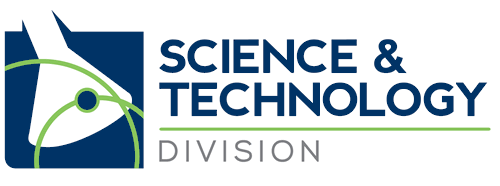Blog
-
By Molly YurickRe-posted from The Savvy Newcomer blog with permission from the author As a new ATA member in 2015, I received my first edition of The Chronicle and was intrigued by the article about Jenny Stillo, the winner of the 2013–2014 School Outreach Contest. At the time, I was in my sixth year working for the Spanish Ministry of Education as a cultural ambassador, which involved visiting students of English in public schools across Spain. The combination of the chance to win a free registration to the conference in Miami and the opportunity to teach students about my passion …
-
This article is re-posted with thanks to The Savvy Newcomer blog. When you come into the translation business, you usually know deep down if you have what it takes to be a technical translator. As a basic starting point, you need good technical instincts in the field you are interested in. That may come from a prior career, a course of study, a family business, or a hobby that you are managing to turn into a money-maker. Hearing tales of the often amazing series of events that bring us to the point of beginning a career in translation are part …
-
Review by Martina Burkert At the 2015 ATA Annual Conference in Miami, the Science and Technology Division offered several excellent sessions. One of them was Matthew Schlecht’s presentation on Risk and Safety Phrases in Technical Texts. R & S Phrases R-phrases (short for Risk Phrases) and S-phrases (short for Safety Phrases) describe risk and safety aspects of dangerous substances and preparations in 1–13 words. They are associated with identifying letter-number codes and occur in chemical documentation like product labels, shipping manifests, MSDS/SDS/PSDS sheets, manufacturing instructions and batch records, as well as related legislation and regulations. H &P Statements H-statements (short …
-
Reviewed by Mery Molenaar On this beautiful November morning in Miami, Florida, I am heading to the conference hotel to attend the second day of the ATA conference. I am excited that there are several science-related presentations on the schedule. Since I often translate user manuals for medical instrumentation, I am especially looking forward to today’s talk by Dr. Joanne Archambault about risk analysis for medical devices. While the last people are entering the room, Joanne welcomes us and starts out with her goal for today: to teach us about the risk management process used with medical devices. …
-
Review by Jesse Tomlinson Marcia Johnston: “Tight, readable, concise. But what does concise mean?” We’re at ATA56 in the preconference seminar with Marcia and we’re talking about English writing. In lieu of “Ms. Johnston,” I feel comfortable calling her Marcia, not just because the title of our seminar is “Teach Your Text to Strip”, and it isn’t because she’s in a lounge singer’s dress and red feather boa with lovely black gloves snaking up to her armpits. It’s because she’s an accessible, friendly online personality who plays a game called “Tighten This!” involving sentences that need to be stripped down. …
-
Ana Salotti will be presenting “Voyage to Antarctica: Translating the Environment” on Thursday, November 5th 2015, at 11:15am-12:15pm. Did you know there is an official ocean in the world called the Southern Ocean? This ocean surrounds Antarctica, and is one of the most pristine, delicate and abundant marine environments in the world. https://www.ccamlr.org/en/system/files/CCAMLR-convention-area-map-large.pdf In this session, Ana will focus on the challenges of translating texts on marine conservation in the international and intergovernmental arena, and more specifically on the conservation of the icy ocean that surrounds Antarctica, the Southern Ocean. Attendees will learn about its resources, exploitation, and conservation efforts. …
-
Webinar presentation by Martin Cross Review by Alicja Yarborough, PhD As a part of ATA’s webinar series on October 1, 2015, Martin Cross presented “Translating Patents for Evidence and PCT Filing,” an overview of the methodology that can be used for both evidence and PCT filing, as well as the differences between these purposes. The handout included a chapter of his book on the same topic. Martin began the webinar with a short illustrative anecdote describing what happens and what can go wrong when a patent attorney needs to prove that an idea for an invention is new, but some …
-
Tapani Ronni will be presenting “Vaccines: Past, Present, and Future” (ST-5, Friday 2:00 pm – 3:00 pm). This brief review of vaccines is aimed at medical and scientific translators. While everybody is welcome to attend the talk, some familiarity with basic life science concepts will help in understanding the concepts in this talk. A vaccine is any biological preparation that enhances immune response in order to either prevent or treat a disease. Historically vaccines have been manufactured using killed or weakened (attenuated) microbes, and combinations thereof. Recent advances in biochemistry and molecular biology have made it possible to generate vaccines …
-
Most translators and interpreters, as well as everybody doing international business, know them well: high bank charges, sometimes coupled with exorbitant exchange fees, endless, complicated forms, long clearance times etc. Then there is the archaic way of paying via check. Given that this is the 21st century, one might think that there should be better, cheaper, faster ways for transferring money from person A to person B. There are, of course, Paypal and similar services, which however also involve non-negligible fees, and their newer relatives Apple Pay, Google Wallet, and the like. Neither of the aforementioned options is truly global. …

